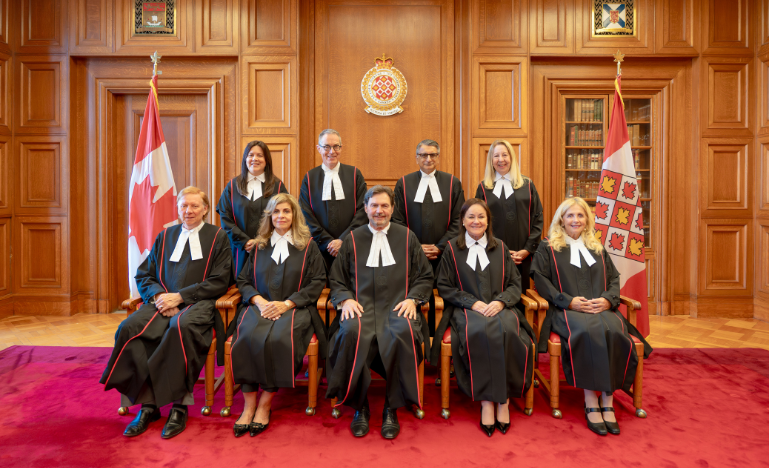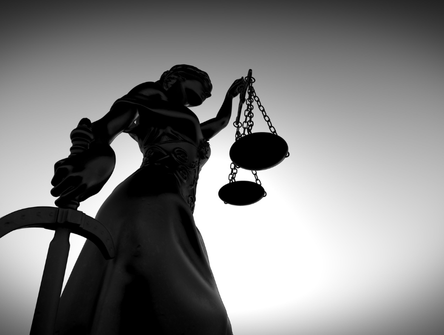Supreme Court of Canada holds first ceremonial opening in 39 years
CBA President Bianca Kratt says the court is a testament to the stability a country can enjoy when its legal institutions remain respected, independent, and grounded in the rule of law

As part of its 150th anniversary celebrations, the Supreme Court of Canada opened the judicial year with its first ceremonial opening in 39 years.
The last ceremonial opening was held under then-Chief Justice Brian Dickson in 1986. It came at a time when the Charter was new and the Court was facing some of the most challenging issues of the time.
“The Supreme Court of Canada is still essentially a general court of appeal for the country,” Chief Justice Richard Wagner said today, quoting Dickson from the 1986 ceremony.
“And that remains the cornerstone of the life and work of this Court today. We are not simply a court specializing in constitutional law, and we will not become one.”
To demonstrate this fact, Wagner listed appeals coming up in the current session, which include criminal cases involving the protection against self-incrimination and the right to be free from arbitrary searches, as well as cases on patent law, Aboriginal title, labour relations, and official languages.
The Court ended the practice of ceremonial openings around the same time that Parliament ended the practice of prorogation ceremonies in 1983, under the direction of former Prime Minister Pierre Trudeau. It had become tradition for the chief justice to read the prorogation speech—a list of the government’s accomplishments over that session of parliament that was being closed—dating back to 1939, when Prime Minister William Lyon Mackenzie King waited for the governor general to be out of town before calling for a prorogation.
In addition to a return to tradition, today’s event marked the debut of new ceremonial robes for the justices. They are much simpler black robes with red piping along the sides, and according to the Court, they represent a balance between the weight of tradition and an openness to the future. They’re also meant to reflect Canada’s identity and values more authentically. Wagner described them as preserving the dignity and authority of the judicial role.
“They have a modern and simple design that echoes our commitment to openness and accessibility in a way that is distinctly Canadian,” he said.
The robes were crafted entirely in Canada to highlight Canadian talent, craftsmanship, and innovation.
The ceremony marked the final session in the current Supreme Court building, before it relocates to the West Memorial Building across the street for the next 10 or so years, while the current building undergoes necessary renovations.
Wagner used the occasion to announce the creation of the Historical Society of the Supreme Court of Canada, which will help preserve its history and legacy, foster research, promote education, and engage in public outreach. Former justice Thomas Cromwell and former registrar Anne Roland are co-chairing the initiative.
The weight of current events was palpable during the ceremony, both for Wagner and some of the speakers. He reiterated comments he made earlier this year, stating that Canada is a democratic superpower and the rule of law is non-negotiable.
“Everyone in this room and across Canada’s diverse legal community is committed to public service,” Wagner said.
“We are also united in our deep conviction that the rule of law and judicial independence are not abstract concepts. They are the best defence against tyranny and autocracy.”
Building on that, Justice Minister and Attorney General Sean Fraser said it has become too common to see norms that have been held sacred slowly being eroded. This includes trading relationships that have frayed after being taken for granted, as well as members of the United Nations Security Council acting in open defiance of the norms of territorial integrity, sovereignty, and self-determination.
“We see easily the temptation of political actors around the world and at home to give in to calls to give away the rights of another person, to weaken our institutions in a moment of political expediency."
Fraser added that while it may be easy to give away the rights of others, it is essential for everyone to stand in defence of the law to protect those who don’t have a voice to protect themselves.
To that end, he said the antidote to a democratic decline may not be found on Parliament Hill, but in the laws that are guided by values that everyone holds dear.
“If we expect someone else to do this work for us, we would be making an enormous mistake,” Fraser said, adding that everyone — elected officials, justices of the Supreme Court and ordinary Canadians — must stand up and take ownership of our democracy.
If we collectively fail to do that, he fears “we will succumb one day to the erosion of our rights bit by bit until they are gone, until we reach a moment where there is no one left to defend our rights.”
He said it’s also essential that we respect the ability of the Court to do its job “with whatever challenges we may face of a political nature.”
CBA President Bianca Kratt said the top court is a testament to the stability a country can enjoy when its legal institutions remain respected, independent, and grounded in the rule of law.
“A glance at history, and at the world around us, is enough to see how truly rare this is. And it is not something we can take for granted,” she told those gathered.
It’s why those who work in law have a duty to remind Canadians to cherish the rule of law, and to take its fragility seriously.
“A Supreme Court doesn’t last for 150 years—and counting— as a credible, independent authority without the support of a strong and resilient legal community,” Kratt said.“We need to show our friends, our neighbours, and ourselves, not only the benefits of the rule of law, but also the risks of losing it.”


